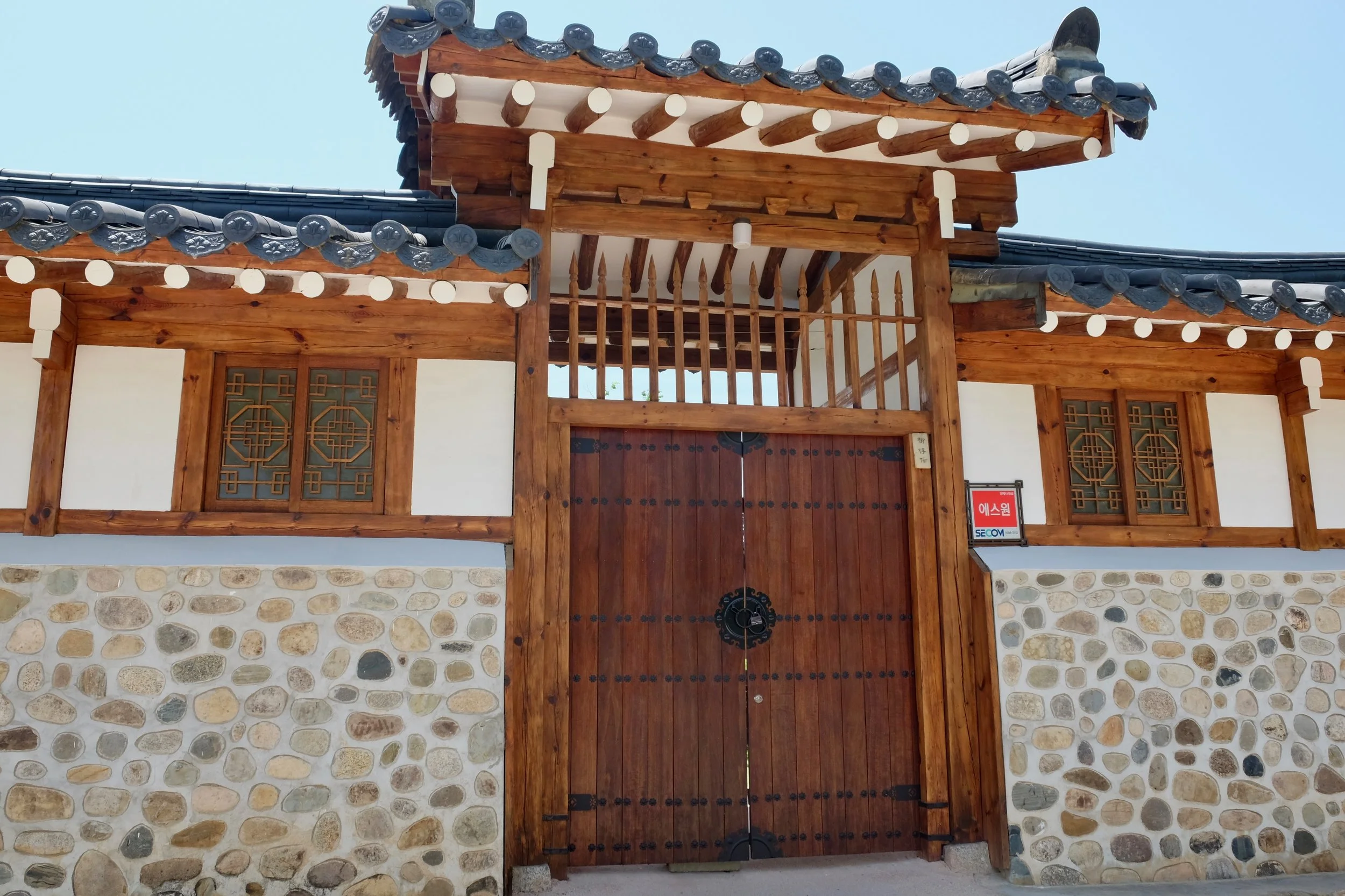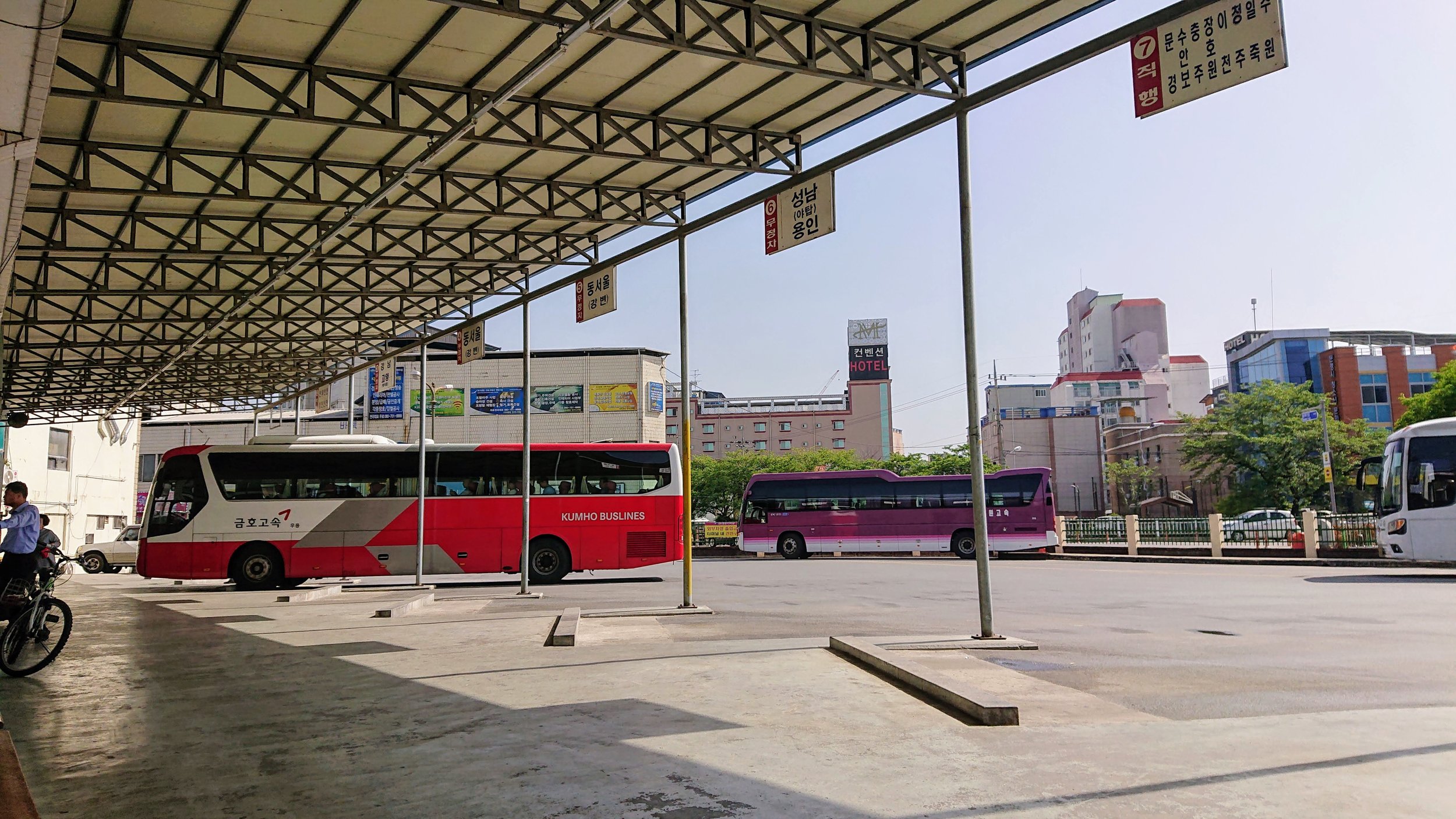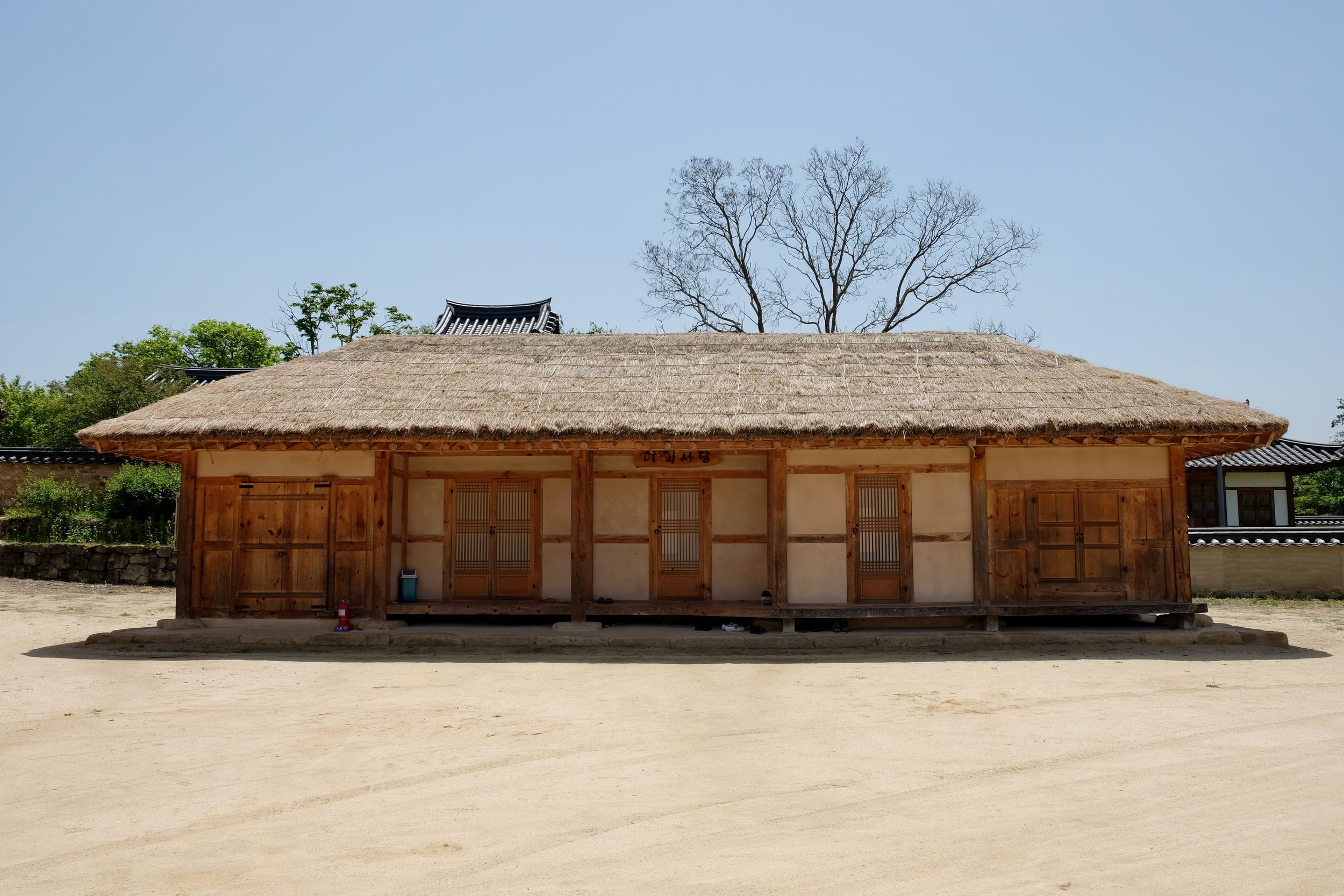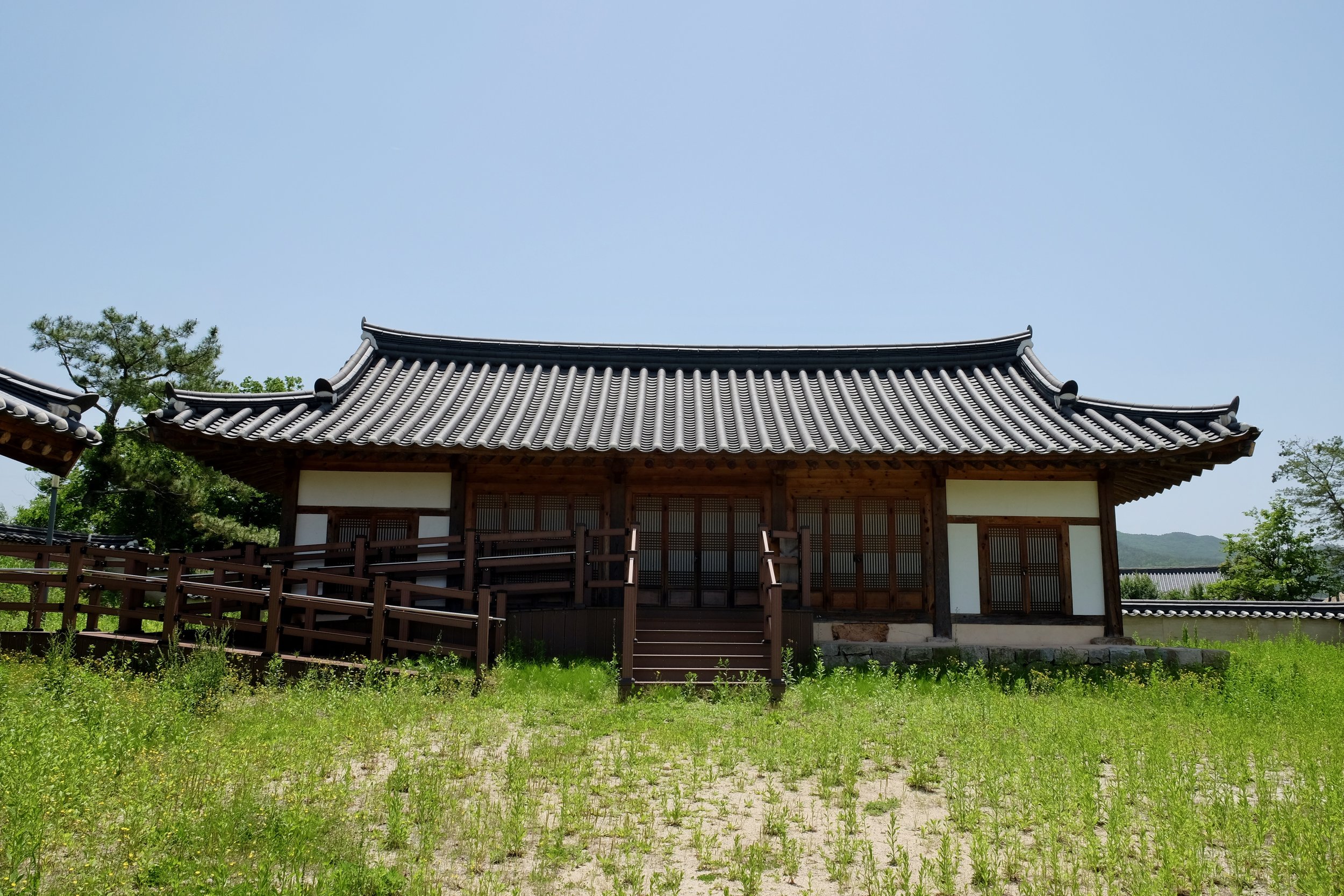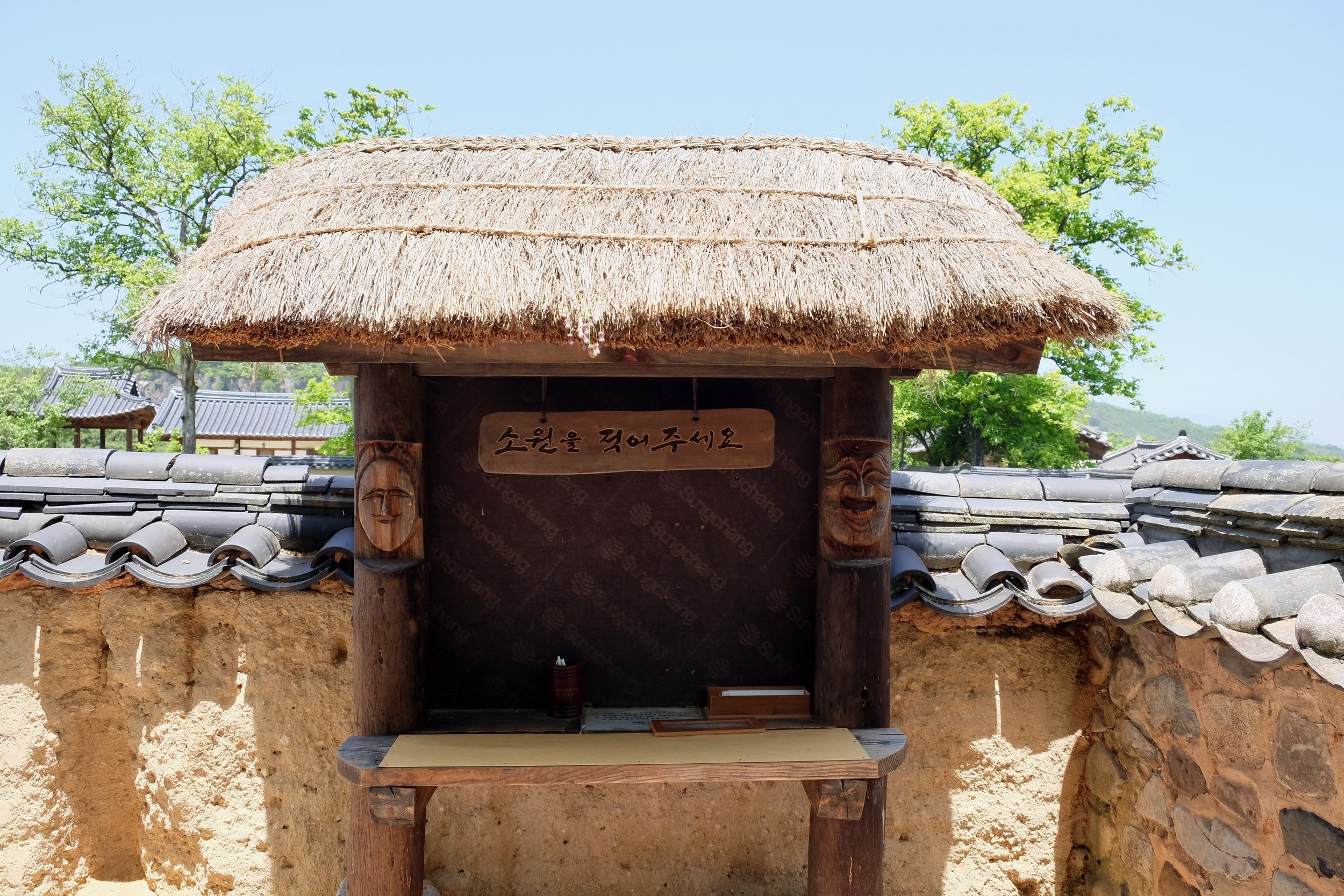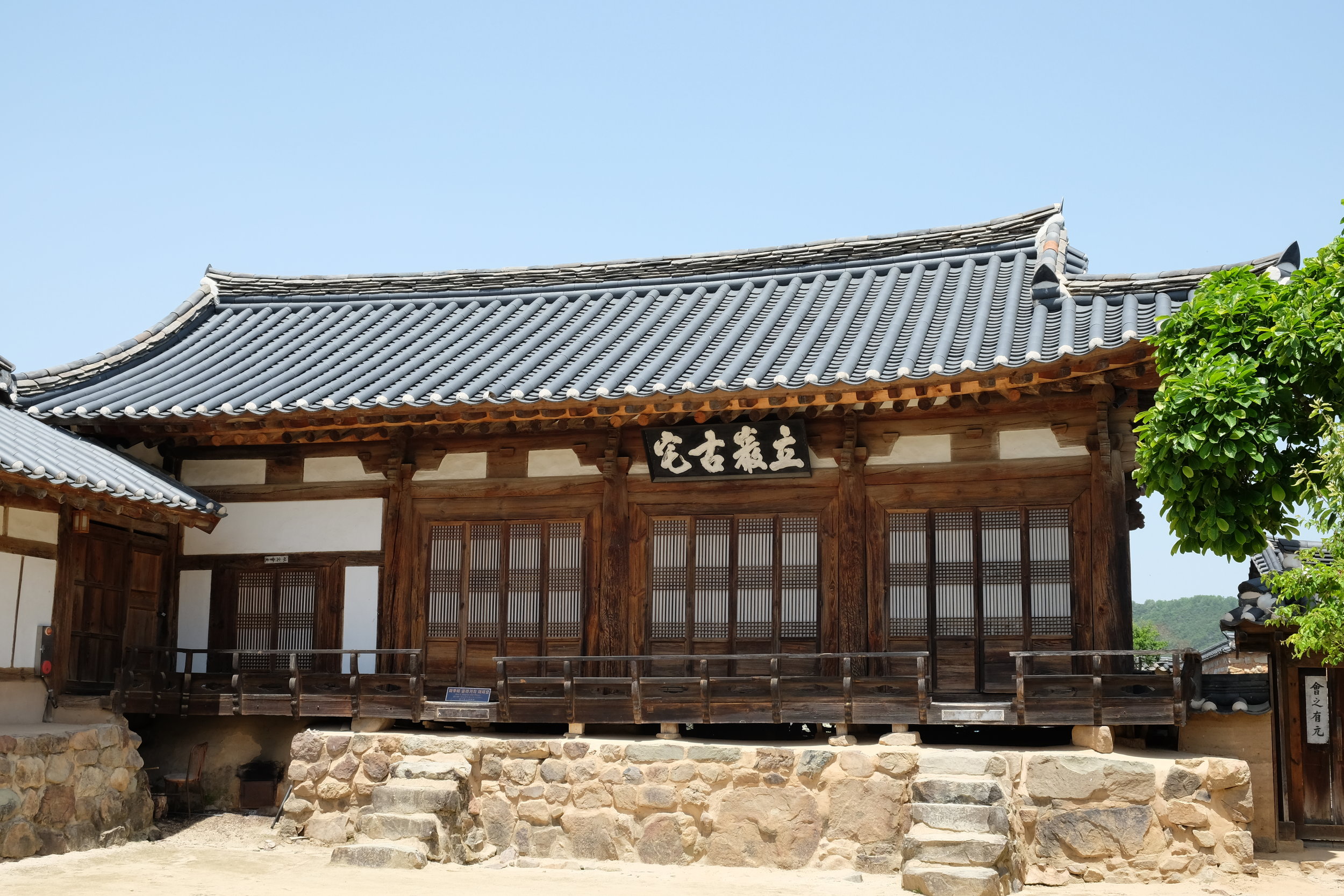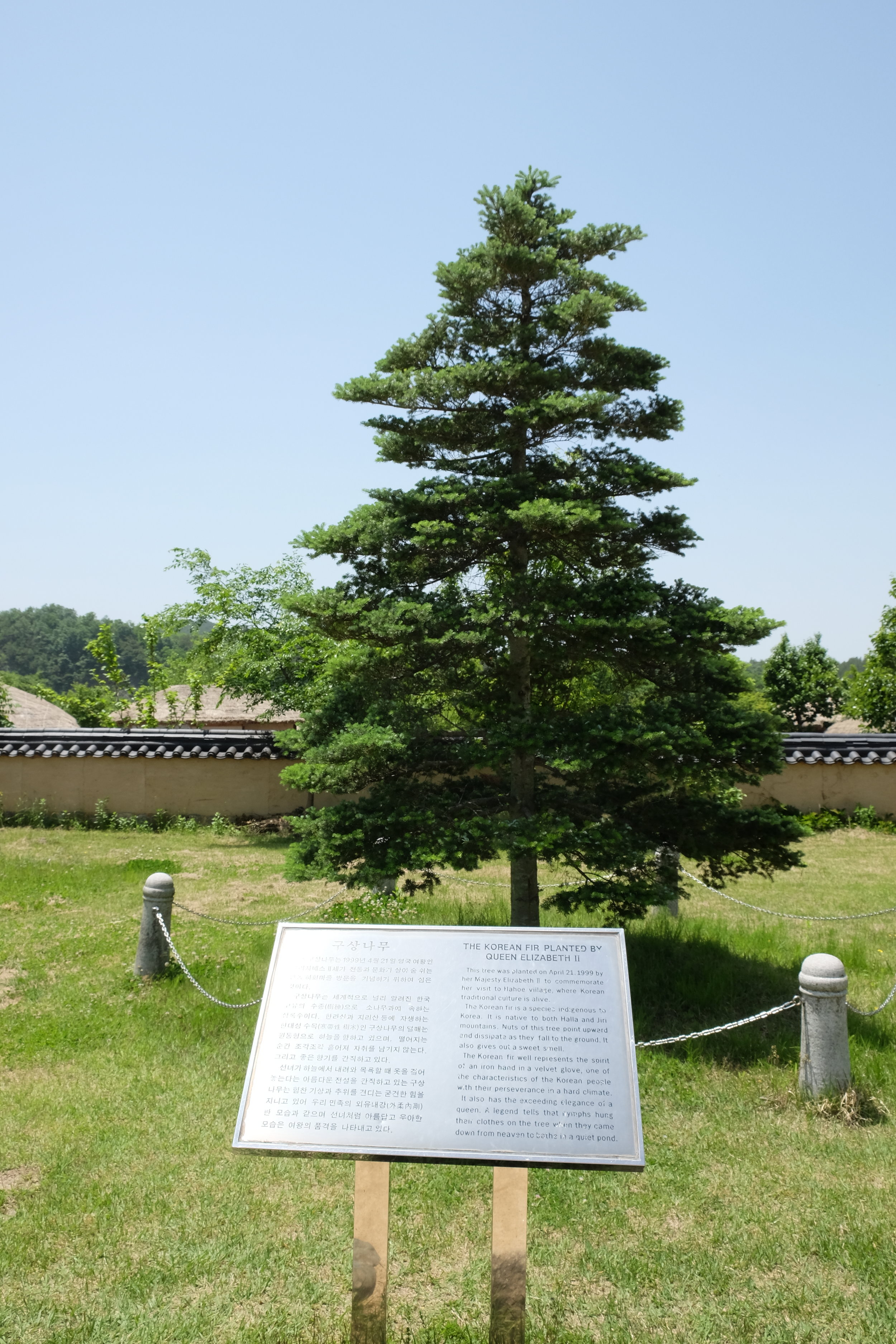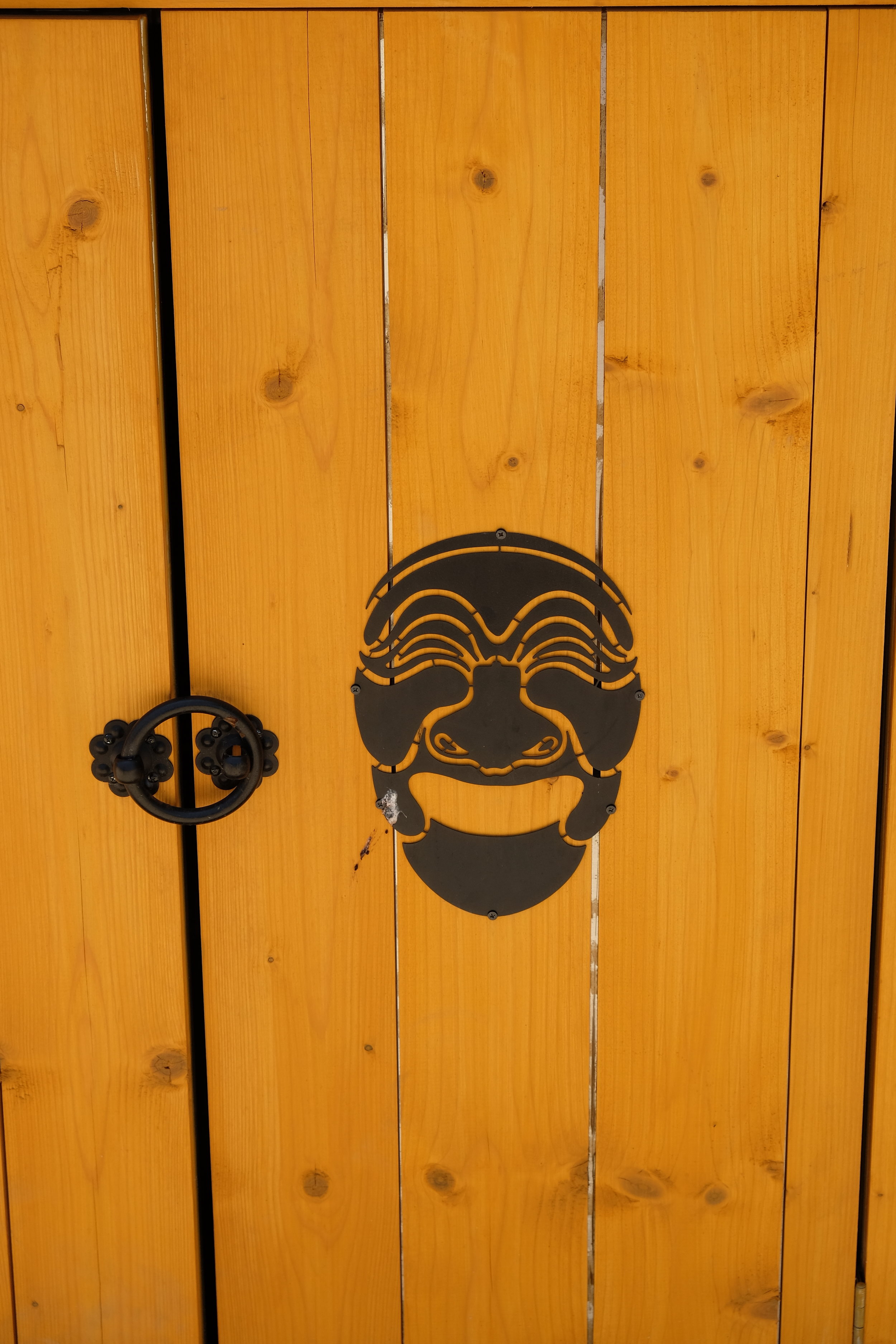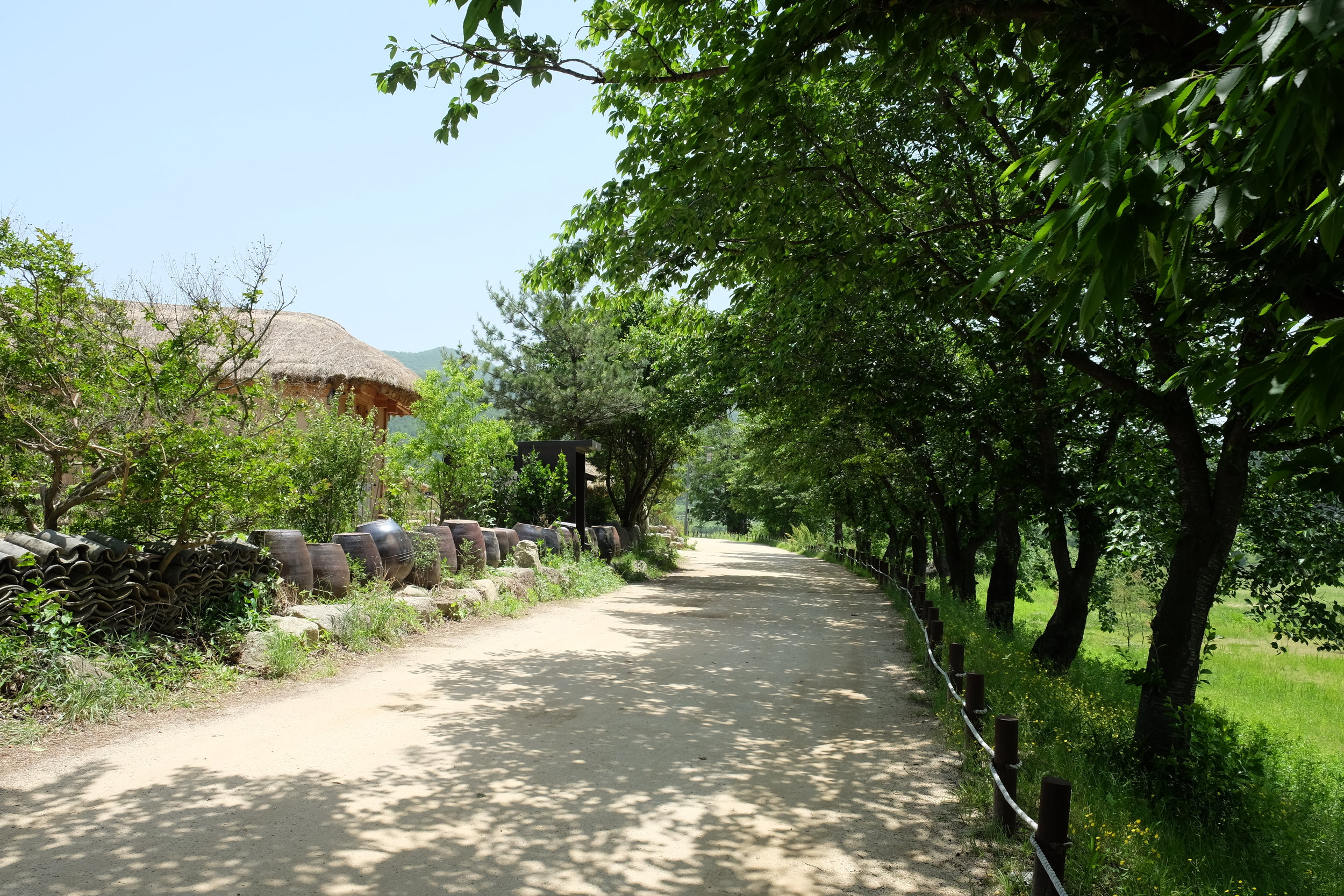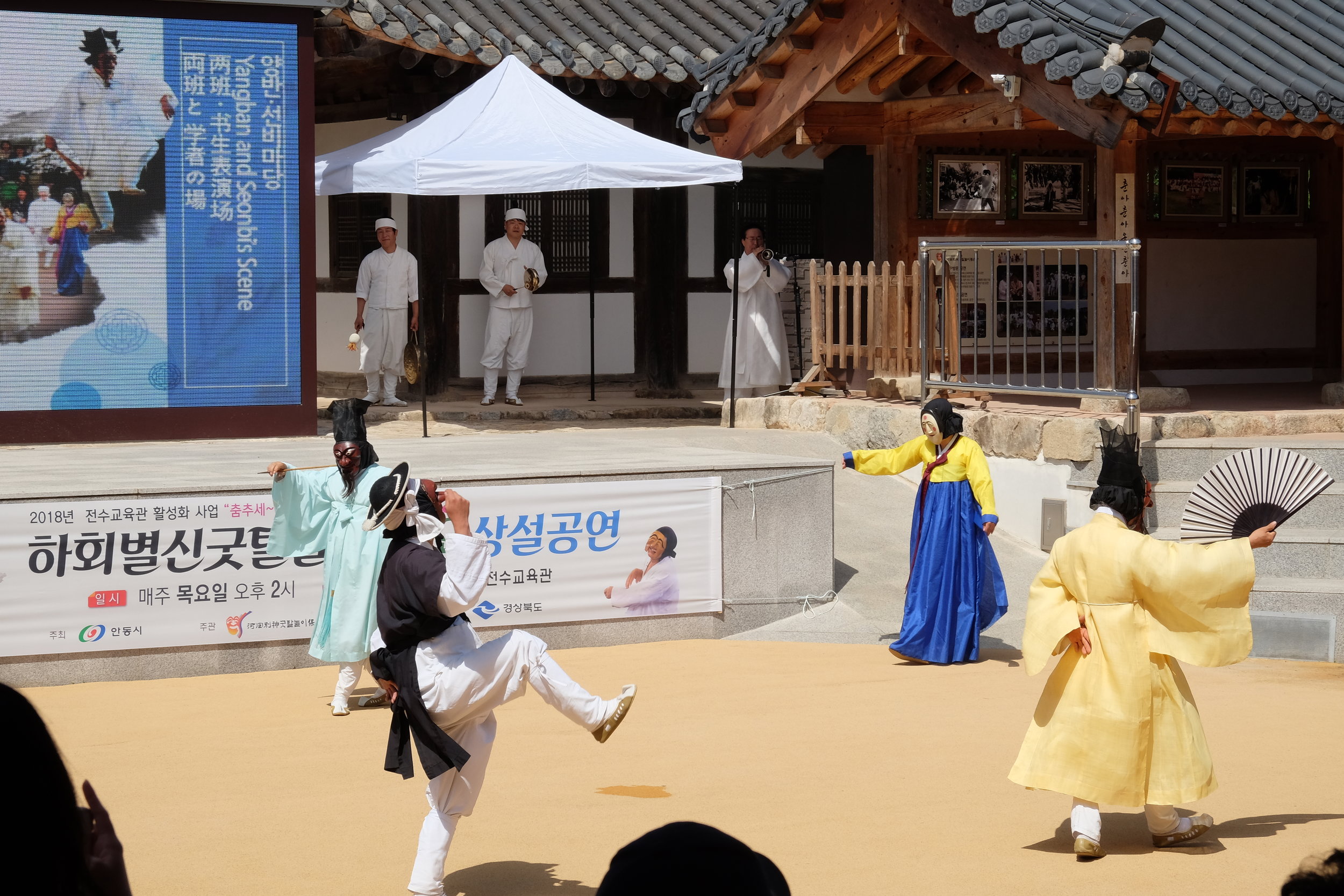A big reason why we’re staying in Mungyeong is due to its proximity to Andong, the capital of the North Gyeongsang Province. Andong is known as a centre of culture and folk traditions, particularly the Hahoe Folk Village.
Originally, we had planned to ride to here, stay the night, and then head back to the main bike trail, but upon further inspection, we realised that doing so would take us well off the main trail. We’ve been hitting some long days lately, and with 65% of the total trip still left to do, it was best to save time and energy where we could. Thus, our current plan was to stay in the next big town over (Mungyeong) and take the bus to Andong during our rest day.
This is the first time that we’ve used the intercity bus system in Korea, and suffice to say, the prospect of it had Jess’s knickers in a twist. As the sole communicator on this trip, every time she has a conversation with locals, or has to translate something into English, her brain stays frazzled for some time afterwards. Since Jess has really had to dig deep into the dregs of her foggy childhood memory to remember what little Korean she used to know, it’s not surprising that yet another Korean infrastructure that she has to figure out on the fly makes her feel pressured (well, that plus Neil’s ever so helpful side commentary of “I don’t know, you tell me”).
The Jeomchon Bus Terminal is just a 5 minute walk away from the City Motel if you get a green light at the crossing, and about 20 minutes if you don’t. We’re not kidding, the wait for a green man is interminable. When we (finally) got there, Jess was delighted to find automatic ticket machines with an English language option. One less human interaction to blunder through. Happy days.
Two return tickets to Andong cost 13,000 won, and the platform number was helpfully printed on the ticket, negating the need for one more stilted conversation. Buses run every 30 minutes-1 hour and are generally on time.
Jeomchon Bus Terminal. Most stations in Korea come with a convenience store and mini restaurant so you’re well taken care of before embarking on your journey.
Thrilled.
The bus ride to Andong is usually 1.5 hours long, but our driver was running a few minutes late getting into Jeomchon and decided to make up for lost time by gunning it to our destination and arriving there a full half hour early. Once we disembarked, there was a moment of confusion regarding which shuttle to take to the Hahoe Folk Village, which is 15 kilometres west of the actual city. Naver had mentioned the 0 or 11 bus, but when I asked an 11 bus driver, he said that the 246 bus went there instead.
In hindsight, we could have googled this information in advance, but in case you still can’t make heads or tails of it, there is a tourist info centre directly across the street from the Andong bus terminal. The 246 bus leaves at the stop right next to the taxi stand, and goes to Hahoe every hour on the hour.
So straightforward.
Once we arrived, it was about noon and the bus dropped us off right next to the ticket counter. Foreigner tickets to enter the village costs 5,000 won per person (Korean nationals get in for 1,000 won). Naturally once you’ve paid, you gravitate towards the hubbub, thinking that’s where everything’s about to go down. Instead, you find a cluster of restaurants for the lunchtime masses. There’s no signs telling you that what you’re actually supposed to do is take the shuttle bus to your left, which then drives you an additional 1.2 kilometres to the village proper. This shuttle costs 1,300 won per person, and as we were newbies to the whole thing, we had no idea what was going on. Thanks to a very patient driver, we sorted it out.
Hahoe Folk Village is a Unesco World Heritage Site and where generations of the Ryu family have made their home for the last 600 years. It is located in the heartland of the Joseon Dynasty that ruled the Korean peninsula from 1392 to 1910. Hahoe translates to “Village Enveloped by Water”, and it is a charming blanket of over a hundred traditional countryside houses nestled right next to the Nakdong River. It is a cross between an actual historical site and a living, working family compound, so we were only able to explore a few of the houses that were open to the public, while the others remained closed for private use.
The village was located to provide both physical and spiritual nourishment from its surrounding landscape. It includes the residences of the head family, together with substantial timber framed houses of other clan members, pavilions, study halls, Confucian academies for learning, and clusters of one storey mud-walled, thatched-roofed houses, formerly for commoners.
Situated at the very centre of Hahoe Village, this 600-year-old zelkova tree is called Samsindang, which means “shrine for three gods”. It is worshipped as a village spirit. It is believed throughout the country that Samsin exist in every home and are thus enshrined in the matron’s room. But in Hahoe Village, it’s this tree that hosts the Samsin. On the 15th day of every January by the lunar calendar, the people of the village perform a ritual to pray for peace in the village.
You can write your own wish on pieces of paper and tie them around the tree.
This is the head house of the Pungsan Ryu clan. Being the oldest house in Hahoe Village and built in the 15th century, its architecture is time-honoured and historical. Befitting a head house, Yangjindang is of magnificent scale. Pungsan Ryu clan family reunions are held in the master’s quarters. Yangjindang takes its name from the penname of Ryu Yeong (1687-1761), who compiled the genealogy of the Pungsan Ryu clan for the first time.
This tree was planted on April 21, 1999 by Queen Elizabeth II to commemorate her visit to Hahoe Village. The Korean fir tree is a species indigenous to Korea. It is native to both Halla and Jiri mountains. Nuts of this tree point upward and dissipate as they fall to the ground.
Museum that depicts the life and times of renowned scholars who were born here.
Earthen pots filled with pickled goodness. Jess remembers her grandmother using them to store kimchi and soybean paste.
There’s not really any rhyme or reason to navigating the site, so in true Calderwood fashion, we started at the outermost parts where there wasn’t much to see and worked our way in. The entire village takes about two hours to walk through.
One of the houses that the Ryu family still occupies today.
A bit Westworld-y.
The Nakdong River.
As mentioned previously, Hahoe Village keeps the old traditions of a Korea long ago alive and intact. One particular custom is the Andong Mask Dance Festival, which is held each autumn, but we were incredibly lucky to come across a one-off performance in the village square later that day. It was a traditional play of sorts, with men playing both male, female, and animal characters, telling tales of woe and surrender, with an occasional happy ending. It was unlike anything we’d ever seen before. And with subtitles offered in English, Japanese, and Chinese, you could guess where the majority of visitors were coming from.
At this point, it was around 2:30 PM, and as we were in between buses back into town, we stopped by one of the restaurants we came across at the start for a spot of lunch. Andong Gangodeungeo (salted mackerel) is a local delicacy, and 22,000 won got us enough for two, plus rice, soup, and multiple banchan. It was like heaven on a dish.
The bus back to Mungyeong was the same deal as before but in reverse, and we were in town by 6 PM. Neil set off for a spot of bike tinkering before dinner, while Jess folded laundry and had a good cry over a Korean drama that she’s gotten emotionally invested in over the last couple days. While this was all happening, the motel proprietor stuck her head around the garage door downstairs and saw Neil kneeling on the gravel next to the tandem. Doing what all Korean grannies are wont to do, she tsked her way over with a towel to save his bare knees from getting scuffed, and our faith in humanity was thus restored.
Before we knew it, it was time for dinner, and usually around this point in the trip, we’ve sampled enough local food to allow ourselves to eat something more Western, just for a change of scenery.
There was an “Italian” restaurant across the street from our motel and we ate “pasta” for 15,000 won. But what’s memorable about this place was our conversation with the waiter, who spoke decent English and was very curious about us, asking if we were teachers and wondering (again) if Jess was Korean. But while his language skills were impressive, he didn’t know numbers in English, which we soon found out when he tried to read out loud our bill and couldn’t, showing us the register screen instead.
Then a quick walk next door to our neighbourhood convenience store to round out the night with some gin rummy. We also took the opportunity to do some route configuration for the rest of the Seoul-Busan trail, and the next couple days look as follows:
Tomorrow: Gumi, 90km
Saturday: Hyeonpung - 70km
Sunday: Namji-eup, 70km
Monday: Busan, 90km
Fingers crossed for a smooth ride in the morning.
